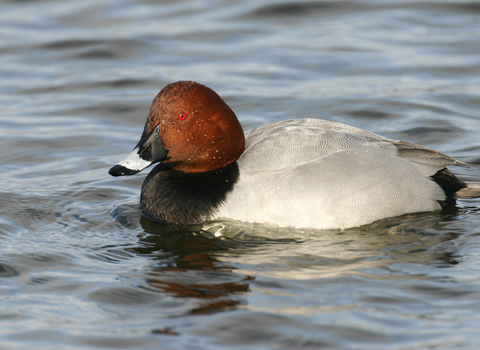
©Tom Marshall
©Derek Moore
Pochard
The once-common pochard is now under threat because its populations are declining rapidly. The UK is an important winter destination for the pochard, with 48,000 birds visiting our wetlands and coasts.
Enw gwyddonol
Aythya ferinaPryd i'w gweld
January to DecemberTop facts
Categori
Stats
Length: 44-48cmWingspan: 77cm
Weight: 930g
Average lifespan: 3 years
Classified in the UK as Red under the Birds of Conservation Concern 5: the Red List for Birds (2021). Protected in the UK under the Wildlife and Countryside Act, 1981. Listed as Vulnerable on the global IUCN Red List of Threatened Species.
